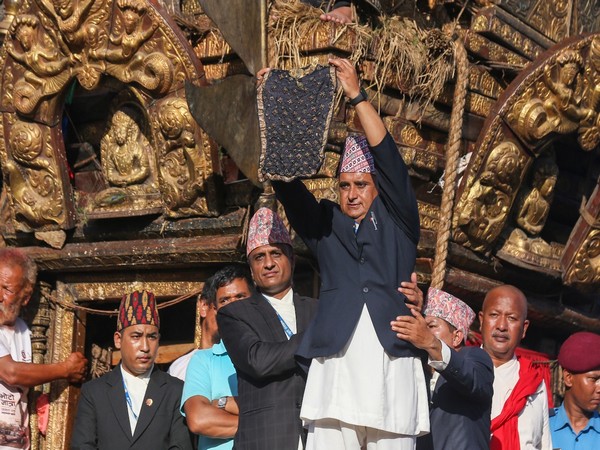The “Bhoto Jatra,” a traditional event in Nepal, concluded on Sunday once again without any claims for the jewel-studded vest or “Bhoto,” which has remained in the possession of Rato Machhindranath, the Red God of Nepal.
in Nepal concluded on Sunday, with another year passing, without claims for the jewel-studded vest or “Bhoto,” which has remained in the possession of Rato Machhindranath, the Red God of Nepal.
The ‘Bhoto’ or jewel-studded vest is shown to the public on the last day of Rato Machhindranath Jatra, which symbolises the end of the longest Jatra and the start of the festivities.
It is a tradition that has been followed for a long time and the Bhoto has remained unclaimed since then.
This year, it also displayed the jewel stud vest to the public, sealed and secured as the Himalayan nation continues to search for its true owner.
This age-old tradition, dating back over a thousand years, has continued in the ancient city of Lalitpur following a mythology where Charkat Naag, King of Naag, wife’s eyes were aching for a long time. They had tried their best to cure her but were not successful.
They then took a ‘Jyapu’ (Native residents of Kathmandu Valley) working in the field, for treatment; he wasn’t sure what he was going to do so he rubbed his armpit and put it into the Queen’s eye and it cured the problem, according to the belief.
The King then asked him (the farmer) for his wish and asked for a ‘Bhoto’. While working in the field, the studded vest was stolen by a “Khyak’ (Ghost in Newari). The farmer then came to the Jatra hoping whosoever had stolen the vest would come wearing it and found the ghost.
Yagya Ratna Sakya, one of the priests of Lord Macchindranath, said that the “Bhoto” displays the apparel of Naagin, the queen of snakes, adding that it was studded with jewels, which was then given as an award to the farmer who was able to cure the eye problem of the Naagin by the Naagraj, ‘King of snakes.’
“The farmer once took off the ‘Bhoto’ while working in the field and the ghost had stolen it. Coincidentally, the farmer and the ghost who stole it faced each other during the Rato Macchindranath Chariot Festival and both claimed possession of the jewel-studded vest. One of the Tantrik came to know the reason for the fight between the two that took place in Jawalakhel and then stated that it would be handed over to whoever could produce the evidence claiming ownership,” the priest said.
He added, “Till the time it would remain in possession of Rato Machhindranath and has remained with the god since then. In this procession, the Head of State is invited as the judge, who would be assigned to examine the evidence. The Bhoto Jatra is being observed annually.”
The Bhoto displayed annually at Jawalakhel in Lalitpur has pearls and jewels attached to it. The jewel-studded vest is packed and kept inside the cloth pouch for a year and opened only in the presence of the State head on a particular day fixed by the priests when the Rato Machhindranath Jatra commences.
The showing of the vest on that particular day shows it to be safe with the state and who is the owner of the vest to come and claim it. This long-run practice has become an integral part of the month-long festival.
Yagya Ratna Shakya highlighted that whoever attends the ‘Bhoto Jatra’ or witnesses the procession once a year would not face any hardships and troubles in life.
“It’s called ‘Asta Bhaya Maha Kasta Haran’ meaning eight fears and great tribulation would divestiture. It would protect people from theft, wind and storm-related calamities, bring more fortune and opulence, which makes it more important and draws people,” Yagya Ratna Shakya briefed.-ANI


